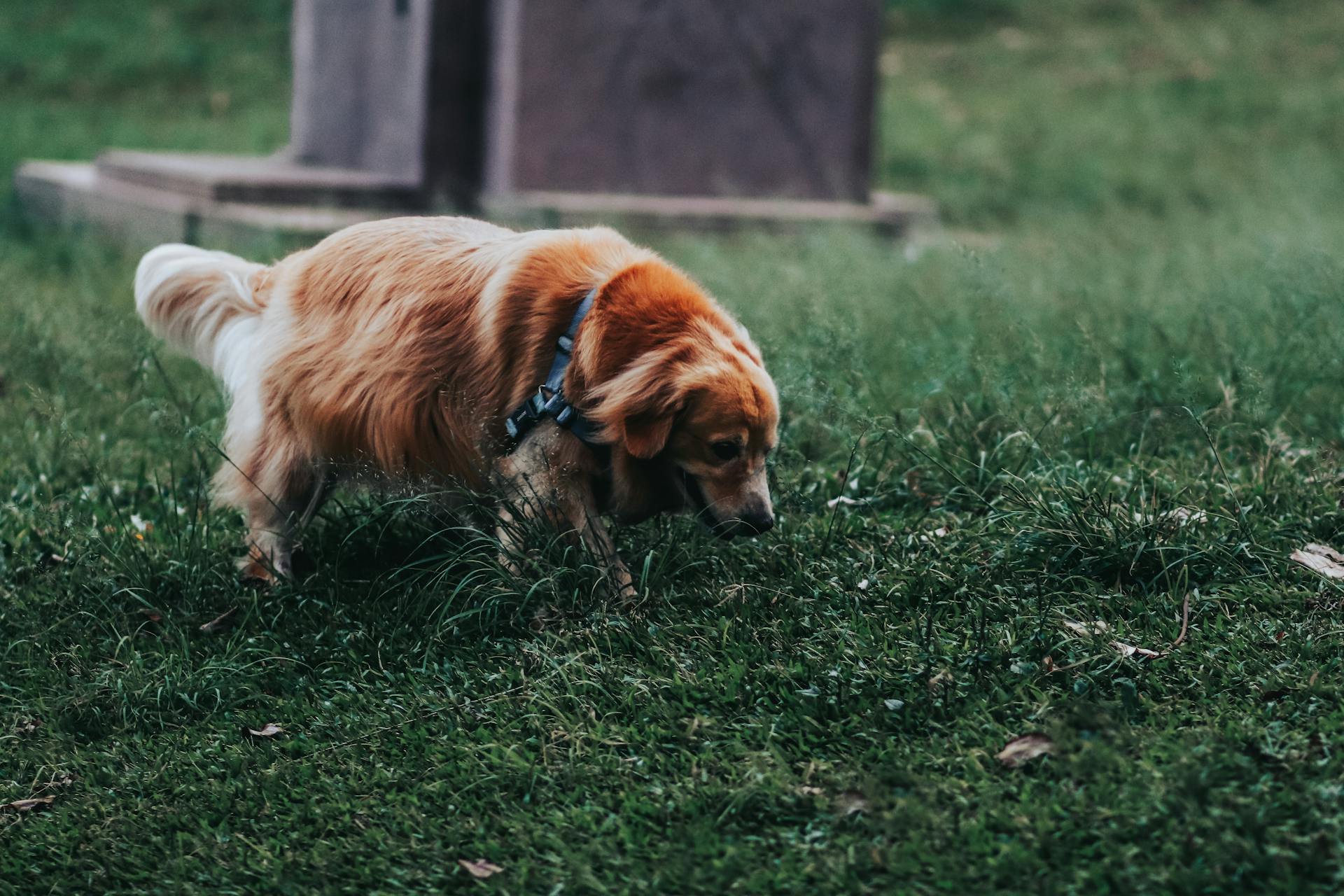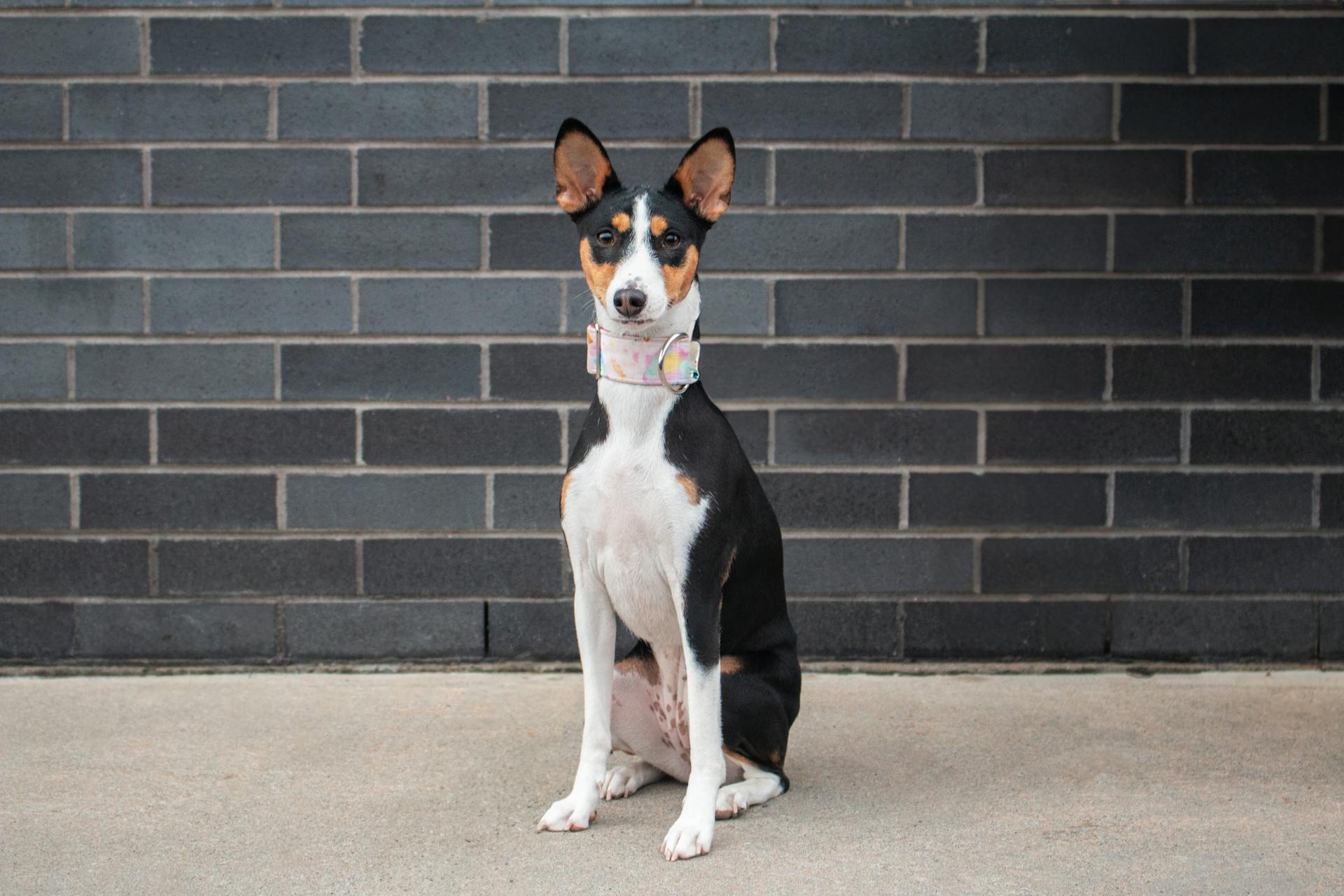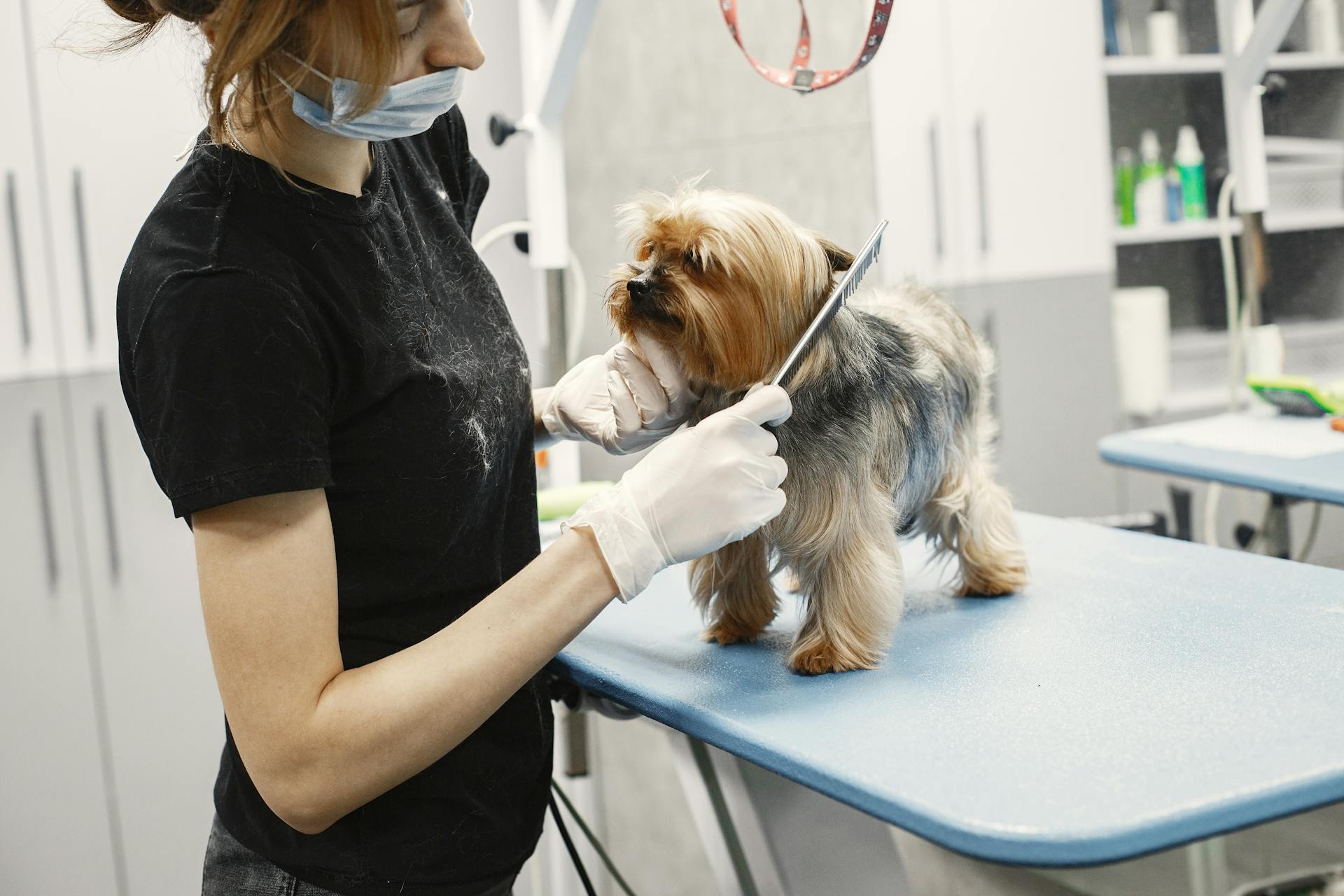
Maltipoos are intelligent dogs that thrive on interaction and mental stimulation. They can become destructive if left alone for too long.
Maltipoos are known to be sensitive to noise and stress, so it's essential to create a calm environment for them. They are also prone to separation anxiety, which can lead to barking and destructive behavior.
To address separation anxiety, it's crucial to establish a consistent routine and provide plenty of exercise and mental stimulation before leaving the house. This can include short training sessions and playtime with interactive toys.
Maltipoos are generally easy to train, but consistency and positive reinforcement are key. They respond well to rewards-based training and can pick up commands quickly with patience and practice.
Recommended read: Maltipoo Separation Anxiety
Understanding Maltipoo Temperament
Maltipoos are naturally sociable and outgoing, forming strong bonds with their human family members. They thrive on attention and affection, which is why they do not prefer to be left alone for extended periods.
Maltipoos' temperament is influenced by genetics, breed characteristics, and environment. Genetics play a significant role, with certain behavioral tendencies encoded in their DNA.
Their parent breeds, the Maltese and Poodle, contribute to their temperament. The Maltese is known for its affectionate and playful disposition, while the Poodle is intelligent and adaptable.
Maltipoos typically exhibit traits like friendliness, intelligence, and playfulness. They are intelligent and quick learners, making them relatively easy to train.
However, Maltipoos can suffer from separation anxiety if left alone for extended periods. They require regular exercise, mental stimulation, and attention to prevent boredom and destructive behavior.
Here are some common traits associated with Maltipoos:
- Affectionate: Maltipoos are loving dogs that form strong bonds with their family members.
- Intelligent: Maltipoos are highly intelligent and quick learners.
- Playful: Maltipoos are energetic and love to engage in playtime and activities.
- Social: Maltipoos are friendly and get along well with other animals and humans.
- Adaptable: Maltipoos can adjust well to different environments and living conditions.
While Maltipoos have a charming personality, they can also exhibit some negative traits, such as excessive barking, stubbornness, and sensitivity to noise. Regular training, socialization, and attention can help mitigate these behaviors.
Genetic and Environmental Factors
Maltipoos are known for their friendly, intelligent, and companionable nature, making them excellent family pets. This is largely due to their genetic predispositions, which are influenced by their parent breeds, the Maltese and Poodle.
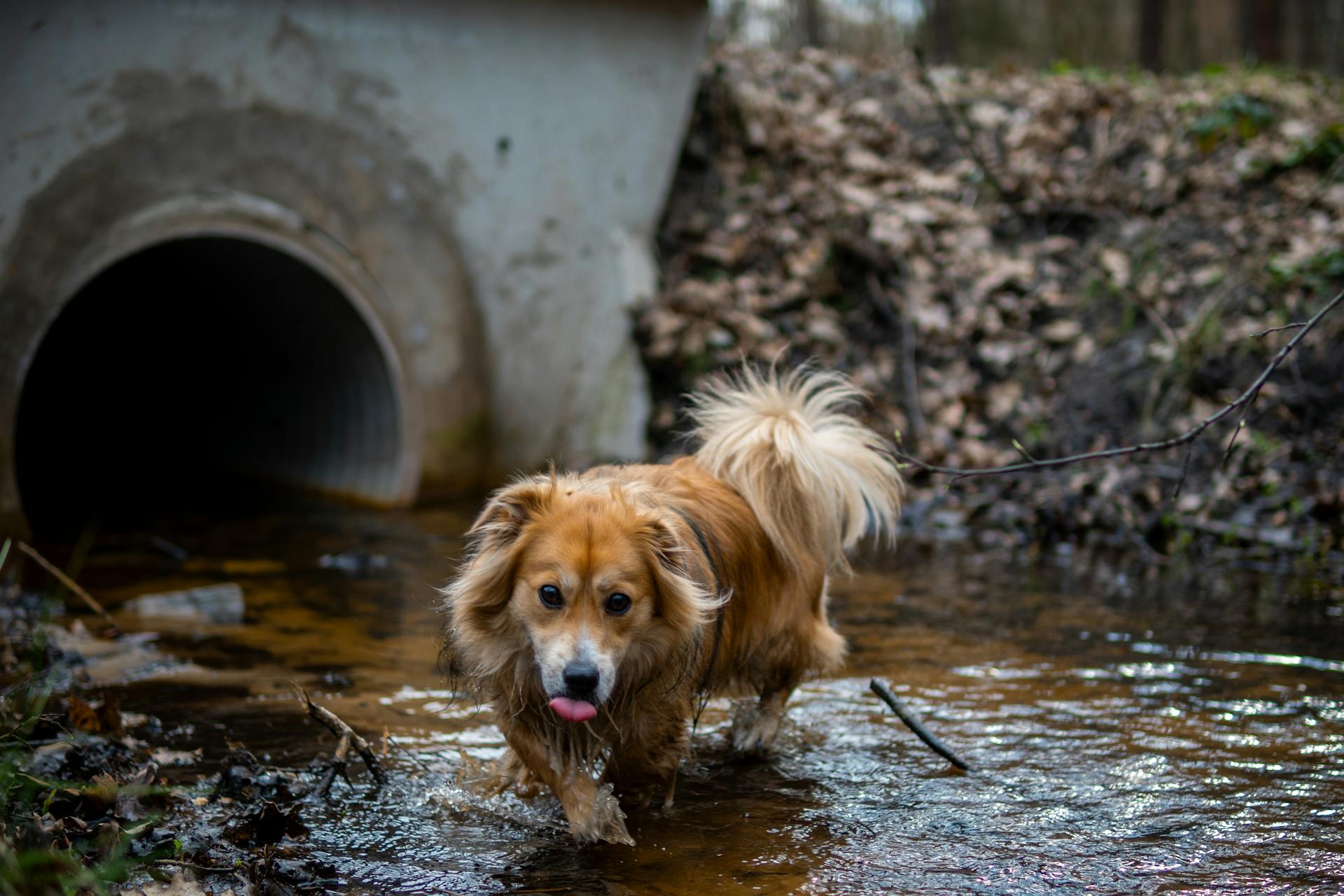
Maltipoos tend to inherit the intelligence and adaptability of Poodles, combined with the affectionate nature and loyalty of Maltese. They are highly intelligent, which makes them relatively easy to train.
Their playful and energetic temperament makes them a lively addition to any home. They love to engage in playtime and activities, and their friendly nature often extends to both humans and other animals alike.
Maltipoos thrive on attention and affection, which is why they do not prefer to be left alone for extended periods. They are companion dogs, known to form strong bonds with their human counterparts.
Genetic diversity among Maltipoos contributes to their unique charm, as each one can inherit different combinations of traits from their parent breeds. This diversity can lead to individual variations in their behavior.
However, environmental factors also play a significant role in shaping a Maltipoo's behavior and temperament. Upbringing and environment can either positively or negatively impact a Maltipoo's behavior.
Maltipoos that are regularly exposed to a variety of people, animals, and environments in a positive manner during their early stages of life often grow to be well-adjusted, confident dogs. This is especially true for those that receive adequate care and socialization.
On the other hand, neglect or abuse can lead to severe behavioral issues in Maltipoos, such as separation anxiety, excessive barking, or destructive behavior. Shelter environments can also lead to behavioral issues in Maltipoos, particularly high-stress ones.
Related reading: Dogs from Puppy Mills Behavior
Training and Behavior
Training a Maltipoo requires patience, consistency, and positive reinforcement. This approach helps create a harmonious relationship between you and your furry friend.
Maltipoos respond well to positive reinforcement, which involves rewarding good behavior with treats, praise, or playtime. Consistency is key, so ensure all household members follow the same rules and commands to avoid confusing your Maltipoo.
A well-behaved Maltipoo is a product of early socialization and proper training. Expose your puppy to different people, animals, and environments in a safe and controlled manner to help them grow into a confident and friendly adult.
Here are some common behavioral issues in Maltipoos and how to address them:
- Separation anxiety: Make departures and arrivals low-key, provide mental stimulation toys, and gradually accustom your dog to being alone.
- High energy: Regular exercise and mental stimulation can help manage your Maltipoo's energy levels.
- Stubbornness: Make training sessions fun and engaging, and break up training with playtime to keep your Maltipoo interested and motivated.
- Sensitivity to noise: Gradual exposure and positive associations can help your Maltipoo cope with noise sensitivity.
Negative Traits
Maltipoos can suffer from separation anxiety if left alone for extended periods, leading to behaviors such as excessive barking, destructive chewing, or other forms of distress.
Their strong attachment to their owners is a result of their genetic predispositions and the quality of care and socialization they receive. A Maltipoo's upbringing and environment play a crucial role in shaping their behavior, and neglect or abuse can lead to severe psychological trauma.
Some Maltipoos may be prone to destructive behaviors if they don't receive enough exercise and mental stimulation. Without regular physical activity and mental challenges, they can become bored and resort to destructive behaviors.
Maltipoos require regular grooming due to their curly, hypoallergenic coats. This can be a significant commitment for owners, but it's essential to keep their coat in good condition.
Negative experiences or a lack of adequate care and socialization can lead to behavioral issues in Maltipoos. For example, neglect can manifest as separation anxiety, excessive barking, or destructive behavior.
Here are some potential negative traits to be aware of:
- Separation anxiety: Maltipoos may suffer from separation anxiety if left alone for extended periods.
- Grooming requirements: Maltipoos have significant grooming needs due to their curly, hypoallergenic coats.
- Potential for excessive barking: Maltipoos can develop a habit of excessive barking if not properly trained.
- High energy: Maltipoos require regular exercise to prevent boredom and destructive behaviors.
- Sensitivity to noise: Some Maltipoos may be particularly sensitive to loud noises.
With the right care, patience, and rehabilitation, many Maltipoos can overcome behavioral issues and thrive in their forever homes.
Training Your
Training Your Maltipoo is a crucial aspect of developing a strong bond with your furry friend. Consistency is key in any training regime, so ensure all household members are on board and follow the same rules and commands.
Positive reinforcement is a great way to encourage good behavior in Maltipoos. Reward your Maltipoo with treats, praise, or playtime when they exhibit desired behavior, making them more likely to repeat it in the future.
Training takes time, and Maltipoos can have their stubborn moments. Be patient and understanding, providing gentle guidance during training sessions.
To address less desirable traits, understand and implement specific strategies. For example, separation anxiety can be mitigated by making departures and arrivals low-key, providing mental stimulation toys, and gradually accustoming your dog to being alone.
Maltipoos can develop anxious tendencies, so following a routine and incorporating short practice periods of independence can help build their confidence and comfort when you're busy or away from home.
To start training your Maltipoo, begin with basic commands such as "sit", "stay", and "come." Consistency and positive reinforcement will make training fun and lighthearted.
Here are some essential steps to get you started:
- Start with short training sessions (15 minutes) to maintain your dog's attention.
- Use rewards such as treats or toys to encourage good behavior.
- Be patient and consistent, as training takes time and practice.
- Gradually increase the difficulty of commands and exercises as your Maltipoo becomes more confident.
Remember, every dog is different, and what works for one might not work for another. Always approach training with love and understanding.
Dog Walking Guide
Walking your dog should be a joy, but challenges like leash pulling, chewing, and reactivity can get in the way.
Leash pulling is a common issue, making walks frustrating for both you and your dog. To address this, try using a harness instead of a collar, as it can help distribute the force more evenly and reduce pulling.
Chewing is another problem that can arise during walks, often due to boredom or excess energy. To combat this, consider packing some of your dog's favorite treats or toys to keep them occupied.
Reactivity can also be a challenge, especially if your dog is easily startled or distracted. To minimize reactivity, try practicing "look" or "watch me" commands to refocus your dog's attention.
Regular walks can help reduce reactivity by providing a sense of calm and stability. Aim for at least one 30-minute walk per day to keep your dog happy and relaxed.
If this caught your attention, see: What Does a Maltipoo Puppy Look like
Socialization and Routine
Socialization is key to your Maltipoo's development and behavior, so start exposing them to people, animals, and different environments from an early age. This will help them become confident and adjusted throughout their life.
The AKC recommends socializing your Maltipoo between 7 weeks to 4 months, as puppies are more open to new things during this time. Take advantage of this window to let them experience sights, sounds, smells, and textures.
Introduce them to social situations gradually, starting with familiar places and widening their experiences. Take them for walks in different neighborhoods, visit parks, and let them play with similar-sized dogs. This will teach them how to behave around others.
Consistency is also crucial in a Maltipoo's life, so establish a regular routine for feeding, walking, and potty breaks. This will help them know when it's time to eat, do exercise, or go potty.
Training should be consistent as well, with dedicated times for commands and encouraging good behaviors. Reward your Maltipoo with treats, praise, or playtime if they follow the commands or show desired behavior.
Broaden your view: Maltipoo Potty Training
Socializing Your Pet
Socializing your pet is a crucial part of their development and behavior. Exposing them to people, animals, and different environments helps make them confident and adjusted.
The best time for socialization is between 7 weeks to 4 months, as puppies are more open to new things during this time. This is a great chance to let them experience sights, sounds, smells, and textures.
Introduce your pet to social situations gradually, starting with familiar places and widening their experiences. Take them for walks in different neighborhoods, visit parks, and let them play with similar-sized dogs.
Make sure the experience is positive for your pet, reward them with treats or praise for good behavior, and avoid punishment or negative reinforcement. This creates a good association with social situations.
Enrolling your pet in obedience classes or training sessions is a great way to socialize them in a structured environment. You'll get advice from experts who understand your pet's needs.
Maltipoos, in particular, get along well with children, but it's essential to teach kids how to approach and touch them gently, and supervise any interactions between dogs and young children.
See what others are reading: Maltipoo Dog Facts
Establishing Routine
Establishing a routine is crucial for your Maltipoo's development and well-being. A regular routine helps your dog know when it's time to eat, exercise, or go potty.
Having a consistent routine also helps build trust between you and your dog, as stated by the American Kennel Club (AKC). This structure in their everyday life is essential for their mental and emotional stability.
Training sessions should be dedicated to specific times of the day, making it easier for your Maltipoo to focus and learn. Consistency is key when it comes to training, so use the same commands and rewards every time.
To avoid distractions, train your Maltipoo in a quiet place, free from excessive noise or other distractions. This will help them focus on the training and learn more efficiently.
Rewarding good behavior with treats, praise, or playtime is an effective way to encourage desired behavior in your Maltipoo. Be patient and persistent, as training takes time and repetition.
Every Maltipoo is unique, so be prepared to adjust your training approach to their personality and learning abilities.
Care and Maintenance
Maltipoos are social dogs who thrive on companionship, so they need quality time and attention from their pet parents. This can be as simple as cuddle sessions, snuggles on your lap, or a good nap together.
Daily exercise is essential for Maltipoos, but they don't need extensive amounts. A quick walk once or twice a day, along with a short play session, will often do the trick to burn off excess energy.
Maltipoos can be noisy, and they may bark at suspicious sights or sounds. Consider this trait before getting a Maltipoo, especially if you live in a building with noise restrictions.
Taking Care of You
Maltipoos are intelligent dogs that thrive on obedience training, so establish a routine early on. This will help them develop favorable behaviors and strengthen your bond.
They require daily exercise, but don't need a lot - a quick walk once or twice a day and a short play session will keep them happy and healthy.
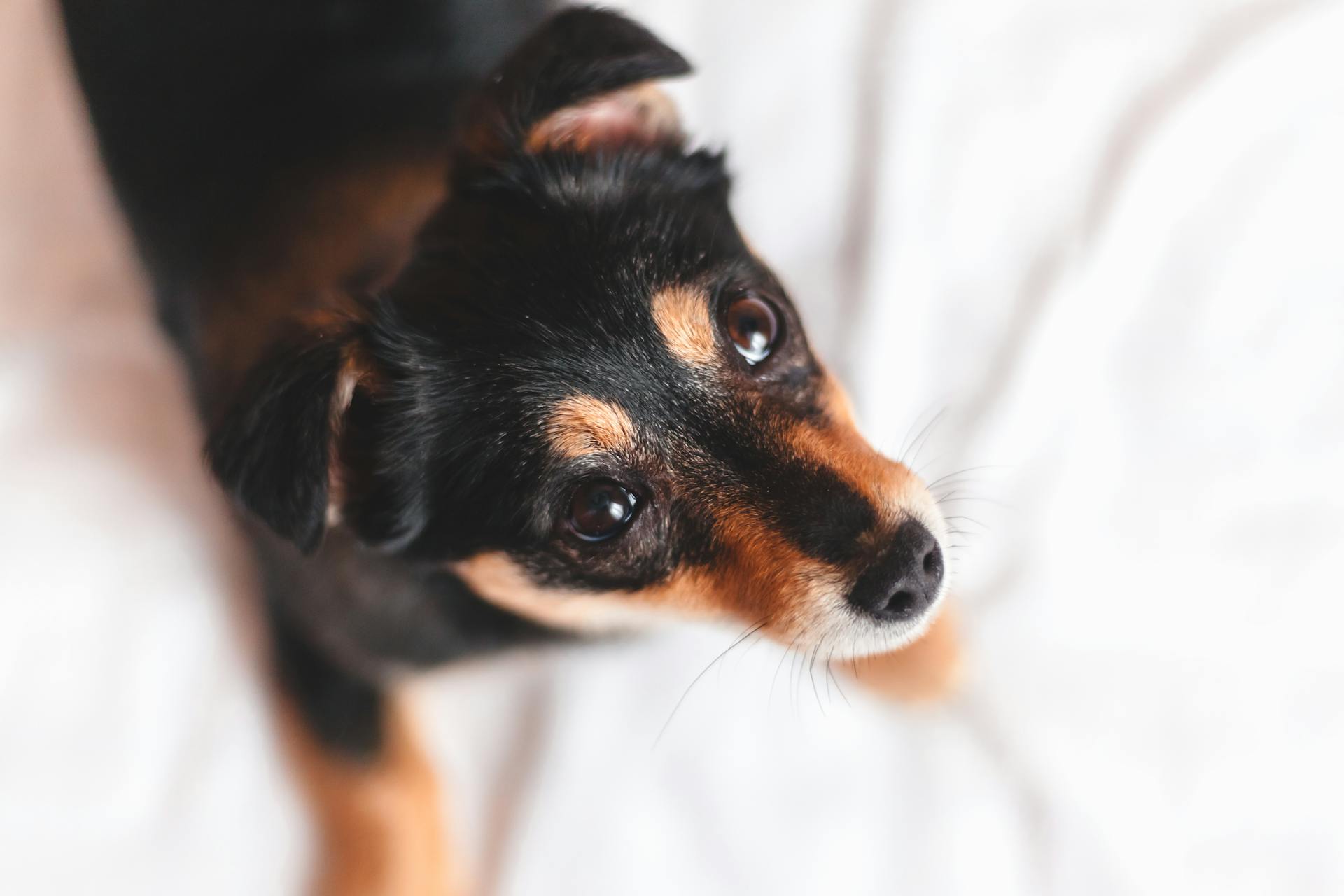
Maltipoos are social dogs who love companionship, making them a great fit for city living or small apartments. They'll even do well in a large house, as long as they get quality time with you.
Cuddle sessions, snuggles on your lap, and nap time together are all essential for a happy Maltipoo. They'll also appreciate plenty of ear scratches.
Be prepared for barking, as Maltipoos can be prone to alerting you to every little noise. Consider enrolling them in an obedience class to help minimize this behavior.
Do Maltipoos Shed?
Maltipoos typically shed very little to none at all. This is because Poodles and Maltese, the two breeds that make up a Maltipoo, are not heavy shedders on their own.
Because of their mixed genes, it's challenging to predict exactly how much a Maltipoo will shed. However, either way, you can expect minimal shedding.
Their low-shedding coat makes them a great choice for people with allergies or who prefer less dog hair.
Worth a look: Do Maltipoo Shed
Care
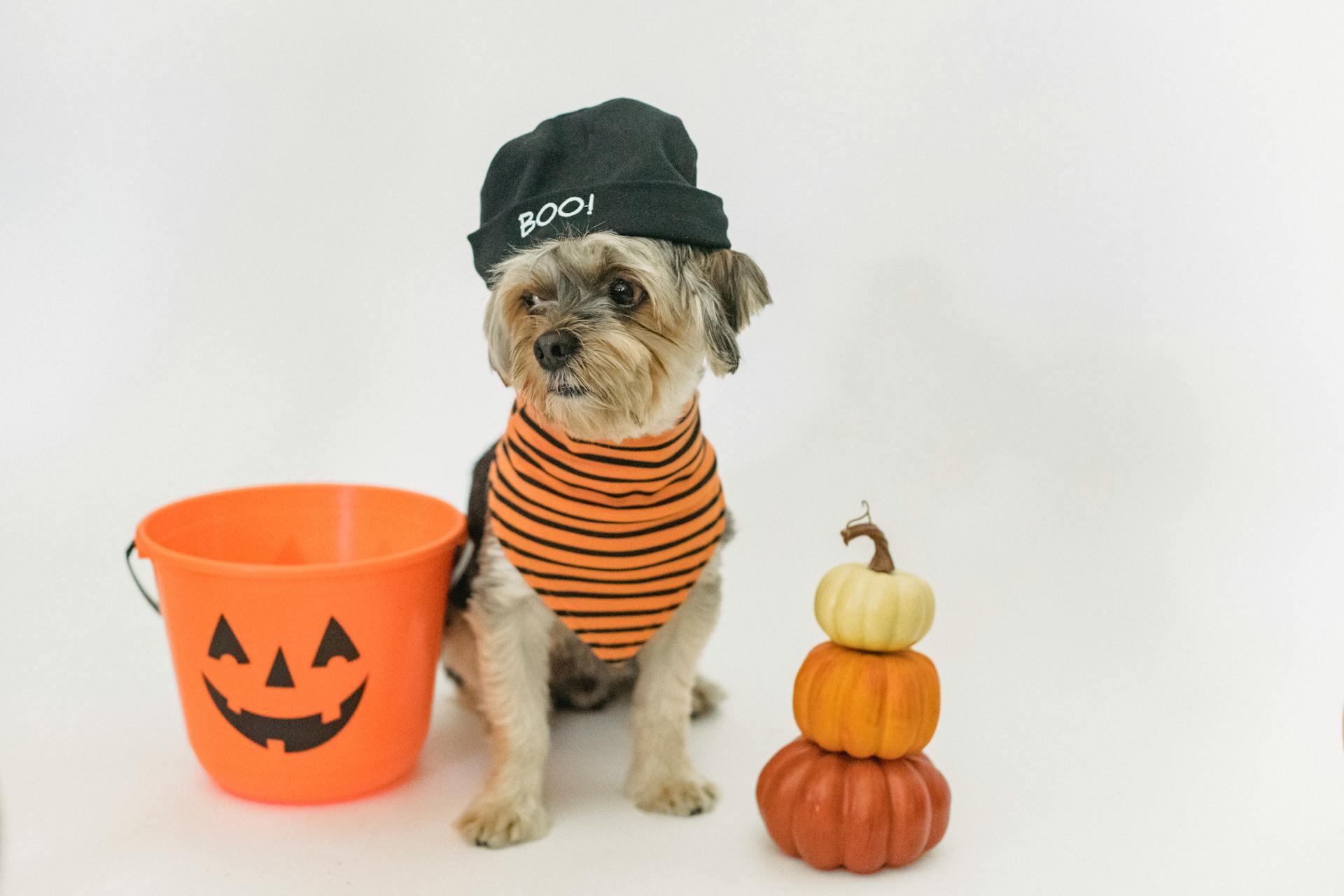
Maltipoos require daily exercise to stay healthy and happy. A quick walk once or twice a day and a short play session will often do the trick.
They also need regular grooming. This is an essential part of their care and will help prevent matting and tangling of their fur.
Maltipoos are intelligent dogs and do well with obedience training. Start training and socialization with your puppy as soon as you can.
They thrive on companionship and love to spend time with their pet parents. This could include cuddle sessions, snuggles on your lap, or even just playing fetch together.
However, Maltipoos can be prone to barking, so it's essential to address this behavior early on. Consider enrolling your puppy in an obedience class to help minimize barking.
A short amount of exercise each day will keep your Maltipoo happy and out of trouble. Give them 10 to 15 minutes of exercise, such as a short walk or play session, to burn off excess energy.
Check this out: Maltipoo Barking
Frequently Asked Questions
At what age does a Maltipoo calm down?
Maltipoos typically calm down between 1 to 2 years old as they transition from puppyhood to adulthood. This age range marks a significant shift in their energy levels, making them a more suitable companion for families with older children or those seeking a lower-maintenance pet.
Do Maltipoos get attached to one person?
Yes, Maltipoos can develop strong bonds with one person, making it essential to share responsibilities with the whole family to prevent over-attachment. This attachment can be managed with proper training and shared care.
Sources
- https://www.mydoodlepuppy.com/maltipoo-behavior
- https://pethealthpros.com/blogs/news/training-your-maltipoo-essential-commands-and-behavior-tips
- https://www.thesprucepets.com/maltipoo-breed-characteristics-and-care-8646257
- https://www.aspcapetinsurance.com/resources/maltipoo/
- https://dogtime.com/dog-breeds/maltipoo
Featured Images: pexels.com
